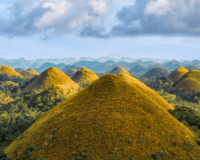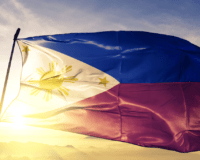Exploring the Philippines Cities: A Guide to the Country’s Dynamic Urban Centers
The Philippines, known for its beautiful beaches, diverse culture, and vibrant history, is also home to bustling cities that each have their own character and charm. These cities offer more than just urban sprawl—they’re cultural hubs where history, tradition, and modernity coexist in fascinating ways. From the dynamic capital of Manila, with its lively energy and profound historical depth, to the culturally rich Cebu, known for its festivals and Spanish-era architecture, each city brings something unique to the table. The scenic city of Davao offers a tranquil escape with lush landscapes, eco-tourism sites, and a deep connection to indigenous heritage, while cities like Baguio and Tagaytay provide refreshing highland retreats with cool climates and beautiful mountain views.
In the Philippines, cities are not only centers of commerce and government but also gateways to understanding the country’s soul. Each city is a microcosm of Filipino life and values, showcasing the locals’ hospitality, resilience, and zest for life. City streets are filled with vibrant markets, busy food stalls, and cultural festivals that reflect the traditions and spirit of the people. Many cities also celebrate their local heritage with annual fiestas and public holidays, where residents come together in colorful displays of music, dance, and culinary delights.
Urban areas in the Philippines are a blend of local traditions and modern lifestyles. In Manila, for example, one can visit centuries-old churches like San Agustin, explore contemporary art galleries in Makati, and stroll along the Manila Baywalk, experiencing both the historic and contemporary aspects of Filipino culture. Cebu and Iloilo, similarly, combine colonial-era landmarks with modern amenities and bustling business districts, creating a mix of old and new that defines many Philippine cities.
This guide explores some of the most notable cities in the Philippines, offering insights into their attractions, significance, and what makes each city worth visiting. Whether you’re a history buff, a foodie, or a nature lover, the cities of the Philippines promise a diversity of experiences that highlight the country’s rich past, dynamic present, and hopeful future.
1. Manila: The Heart of the Philippines
As the capital city, Manila is a dynamic metropolis that showcases the country’s history, modern development, and resilience. The city is a blend of old and new, with historic landmarks like Intramuros, a walled city dating back to the Spanish colonial period, and modern skyscrapers in Makati, the city’s central business district.
- Top Attractions: Intramuros, Rizal Park, National Museum of the Philippines, Manila Baywalk
- Cultural Highlights: Spanish colonial architecture, historic churches, bustling markets
- Must-try Food: Halo-halo, adobo, street foods like isaw (grilled intestines) and taho (sweet tofu)
Manila is the center of commerce, government, and education, making it a vital hub in the Philippines. Its diverse neighborhoods, from the upscale shopping district of Makati to the artistic vibes of Quezon City, make Manila a must-visit destination.
2. Cebu City: The Queen City of the South
Cebu City is the oldest city in the Philippines and often called the “Queen City of the South.” Located in the Visayas region, Cebu has a rich history and is a top destination for both local and international tourists. Known for its vibrant festivals and beautiful beaches, Cebu offers a mix of cultural heritage and natural beauty.
- Top Attractions: Magellan’s Cross, Basilica Minore del Santo Niño, Fort San Pedro, Cebu Taoist Temple
- Festivals: Sinulog Festival, held every January, is a grand celebration of Cebu’s patron saint, Santo Niño.
- Must-try Food: Lechon Cebu (roasted pig), danggit (dried fish), otap (a type of puff pastry)
With its central location, Cebu serves as a gateway to nearby islands and diving spots, making it a perfect destination for both cultural and adventure experiences.
3. Davao City: Gateway to Mindanao
Located in the southern island of Mindanao, Davao City is known for its lush landscapes, scenic mountains, and diverse wildlife. As the largest city in the Philippines in terms of land area, Davao offers vast outdoor experiences and is home to Mount Apo, the highest peak in the country.
- Top Attractions: Mount Apo, Philippine Eagle Center, Eden Nature Park, People’s Park
- Festivals: Kadayawan Festival celebrates the city’s indigenous culture and bountiful harvest.
- Must-try Food: Durian, pomelo, and grilled tuna
Davao City is known for its strict cleanliness and safety regulations, making it one of the most orderly cities in the Philippines. Its eco-tourism initiatives and nature preserves make it a favorite among nature lovers.
4. Makati: The Financial Hub
Makati City is the financial center of the Philippines, home to multinational corporations, major banks, and a vibrant nightlife. Located within Metro Manila, Makati is known for its upscale shopping centers, dining spots, and bustling business district.
- Top Attractions: Ayala Museum, Greenbelt Mall, Ayala Triangle Gardens, Poblacion nightlife district
- Cultural Highlights: Contemporary art galleries, luxury shopping, diverse culinary scene
- Must-try Food: International cuisine, upscale Filipino dishes at Greenbelt restaurants
Makati is a cosmopolitan city where business and leisure converge, attracting professionals, expatriates, and travelers looking for an urban experience.
5. Baguio: The Summer Capital of the Philippines
Nestled in the mountains of Luzon, Baguio City is famous for its cool climate, making it a popular summer retreat for locals. Known as the “Summer Capital of the Philippines,” Baguio is a charming city with pine-covered landscapes, vibrant flower festivals, and a rich indigenous heritage.
- Top Attractions: Burnham Park, Mines View Park, Camp John Hay, Baguio Cathedral
- Festivals: Panagbenga Festival, a flower festival celebrated every February with colorful parades and floral floats.
- Must-try Food: Strawberry taho, ube jam, and locally grown strawberries
Baguio offers a unique mountain experience with its scenic spots, artisanal markets, and relaxing ambiance. The city is also a gateway to the Cordillera region, known for its terraced rice paddies and cultural diversity.
6. Iloilo City: City of Love
Located in the western Visayas, Iloilo City is known for its warm hospitality and historical charm. Often called the “City of Love,” Iloilo boasts well-preserved colonial buildings, stunning churches, and a laid-back ambiance that attracts visitors seeking both relaxation and cultural experiences.
- Top Attractions: Molo Church, Jaro Cathedral, Calle Real, Iloilo River Esplanade
- Festivals: Dinagyang Festival, a celebration in honor of Santo Niño with colorful dances and street parades.
- Must-try Food: La Paz Batchoy, pancit molo, and butterscotch pastries
Iloilo City is a blend of history and modernity, with developments along the Iloilo River that promote eco-tourism and sustainable urban planning.
7. Bacolod: The City of Smiles
Known for its friendly locals and lively festivals, Bacolod City is the capital of Negros Occidental and a key city in the Visayas. Bacolod’s relaxed pace, historical landmarks, and beautiful beaches make it a popular destination.
- Top Attractions: The Ruins, San Sebastian Cathedral, Capitol Park and Lagoon
- Festivals: MassKara Festival, an annual event held in October, featuring elaborate masks and street dancing.
- Must-try Food: Chicken inasal, piaya (a type of pastry with muscovado sugar), and napoleones (a layered pastry)
Bacolod is known as the “City of Smiles,” a reflection of the locals’ warm hospitality. Its blend of natural beauty, vibrant culture, and historical sites makes it a top destination in the Visayas.
8. Zamboanga City: The Asia’s Latin City
Zamboanga City in Mindanao is known as the “Asia’s Latin City” due to its Spanish-influenced dialect, Chavacano, and its distinct Latin vibe. Located on the Zamboanga Peninsula, this city offers unique cultural experiences, stunning beaches, and a diverse mix of local traditions.
- Top Attractions: Fort Pilar, Great Santa Cruz Island (known for its pink sand beach), Pasonanca Park
- Cultural Highlights: Spanish and Muslim heritage, colorful vinta boats, traditional weaving
- Must-try Food: Curacha (spiced crab), knickerbocker (a local fruit salad with ice cream), and satti (grilled meat with spicy sauce)
Zamboanga is a city of vibrant colors, blending Spanish, Malay, and Muslim cultures that make it one of the Philippines’ most culturally diverse cities.
9. Tagaytay: A Scenic Escape
Tagaytay City in Cavite Province is a popular weekend destination for residents of Metro Manila due to its refreshing climate and scenic views of Taal Volcano. Known for its peaceful atmosphere, Tagaytay offers a relaxing retreat from the bustling city.
- Top Attractions: Taal Volcano and Lake, Picnic Grove, People’s Park in the Sky
- Must-try Food: Bulalo (beef marrow stew), tawilis (a type of freshwater sardine), and Tagaytay coffee
With its cool climate, scenic landscapes, and charming cafes, Tagaytay provides an escape into nature without straying far from the comforts of city life.
10. Puerto Princesa: The Gateway to Palawan
Puerto Princesa, the capital of Palawan, is a city known for its pristine beaches and the famous Underground River, a UNESCO World Heritage Site. Puerto Princesa is the gateway to Palawan’s natural wonders, including the limestone cliffs of El Nido and the wildlife-rich islands of Coron.
- Top Attractions: Puerto Princesa Subterranean River National Park, Honda Bay, Nagtabon Beach
- Must-try Food: Tamilok (woodworm delicacy), crocodile sisig, and fresh seafood
Puerto Princesa promotes eco-tourism and conservation, offering a glimpse into the stunning biodiversity of the Philippines.
Each city in the Philippines has its own charm, attractions, and character, making it a country with endless opportunities for exploration. From the historical streets of Manila to the cultural richness of Cebu and the natural beauty of Davao, the cities of the Philippines invite visitors to experience the unique mix of history, culture, and modernity that defines Filipino urban life. Whether you’re a history buff, a nature lover, or a foodie, the cities of the Philippines have something unforgettable to offer.



